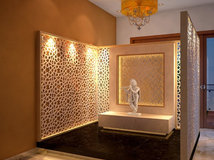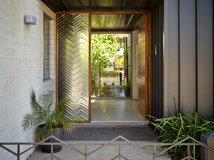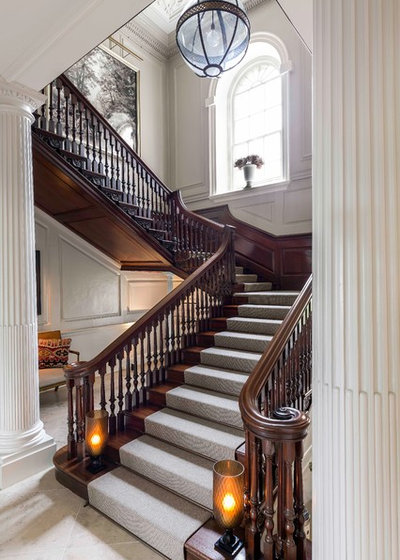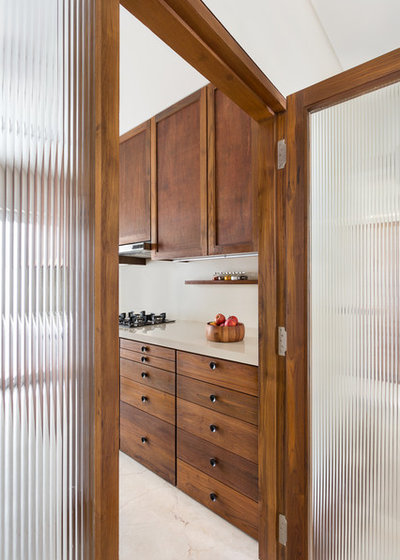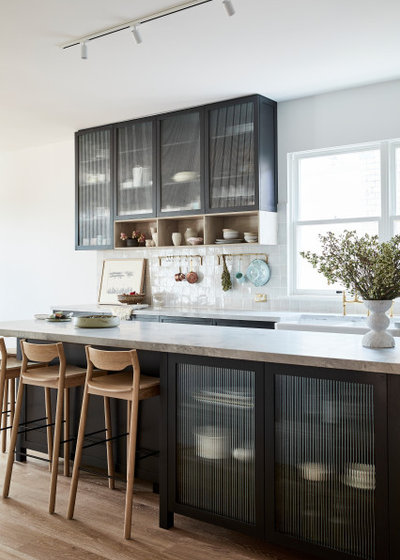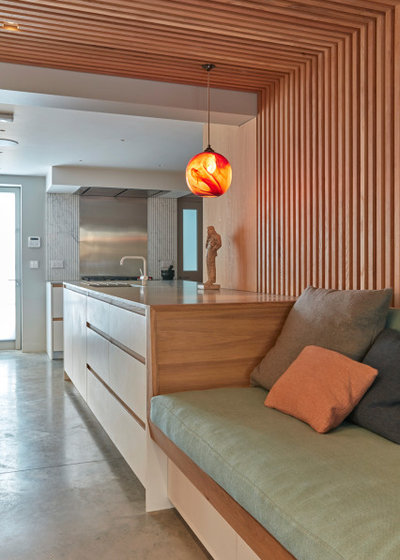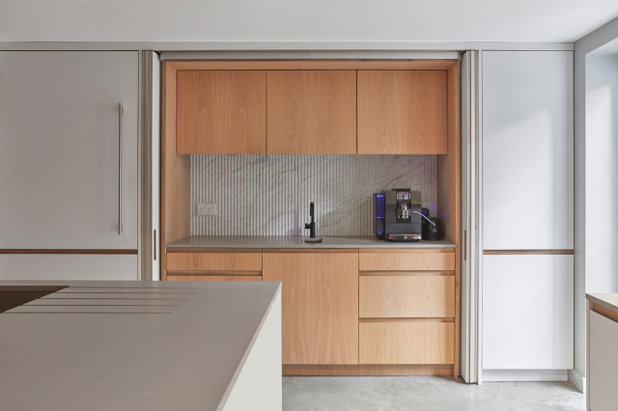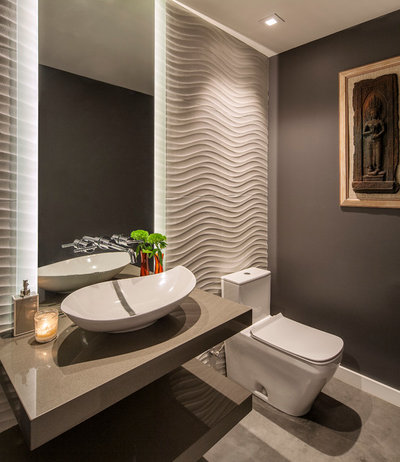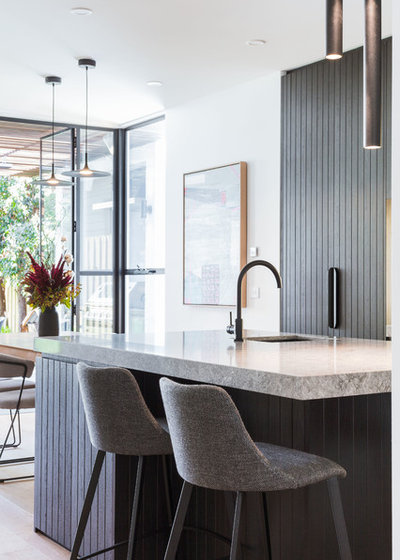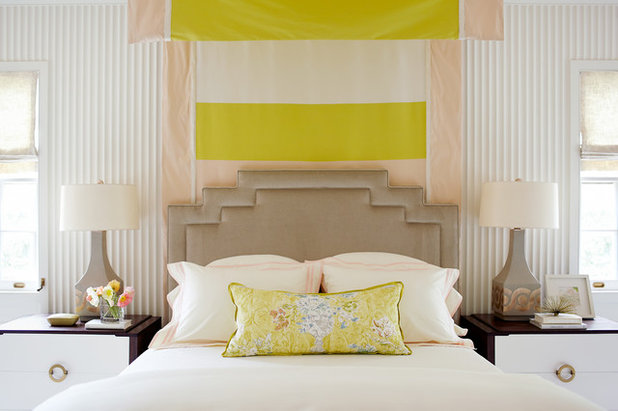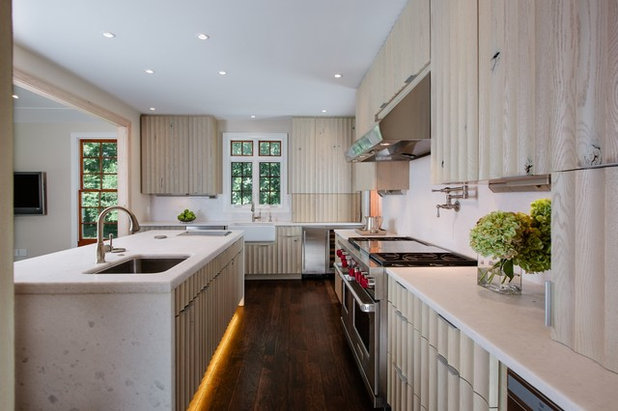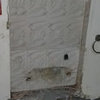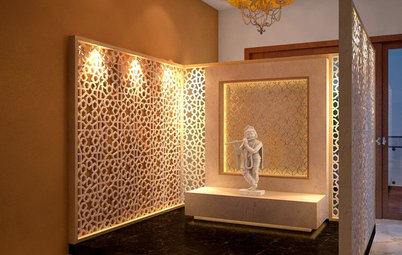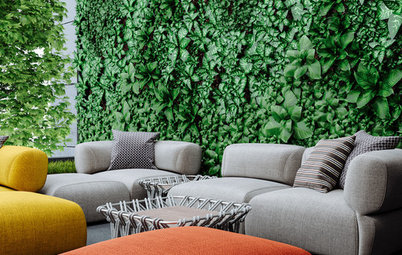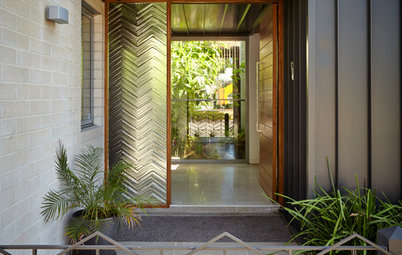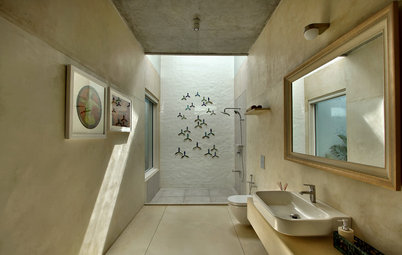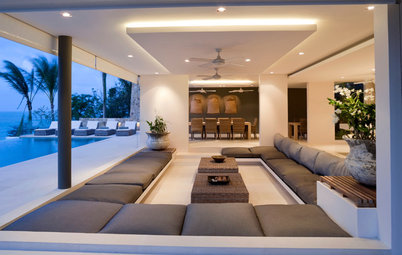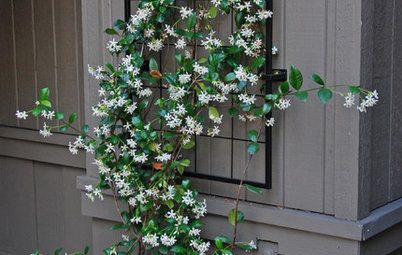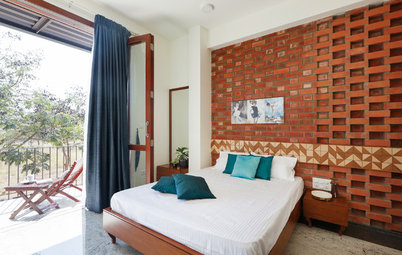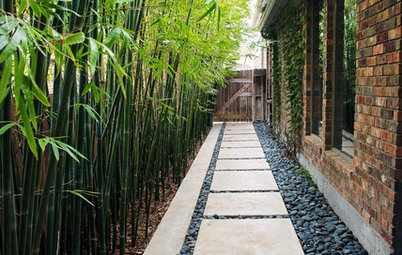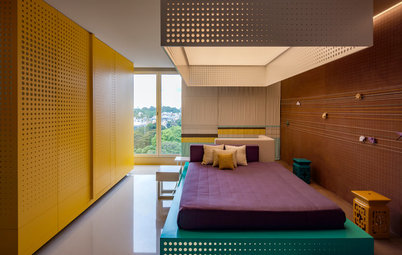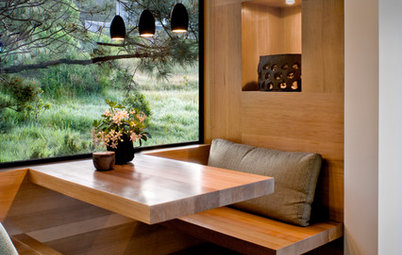Comments
How to Bring In the Legacy of Fluting & Reeding Into Your Home
Explore the immense versatility of materials when it comes to adding texture in the form of flutes and reeds
Aishwarya Khurana
4 August 2021
Opposites of each other, fluting and reeding are techniques that add texture to a plain material. In simple terms, a fluted material consists of a series of regular concave grooves across a surface, while a reeded material is the reverse – it comprises a series of shallow convex ridges across its surface. A type of moulding, these grooves or ridges can be vertical, horizontal or even spiral. Materials that can be fluted and reeded vary from wood to ceramic to even glass.
One of the earliest examples of fluted designs were seen on the ancient Greek columns of the Doric order. Sequences of regular vertical concave flutes on marble columns were a frequently used element in Greek architecture. Fluting and reeding added rhythm to a design and elevated the parameters of a material. Designers are incorporating this ancient technique into modern architecture and interior design. From walls to kitchen cabinets and bathroom vanities, fluting or reeding of materials adds texture and elegance to a minimalist design, retaining its simplicity.
Here are some materials that can be fluted and reeded.
Glass
An extensively used material in interior design, glass has the characteristic of transparency, which can impact privacy because of too much visibility. Fluting and reeding glass largely solves the problem. The fluted or reeded texture causes the light to refract (bend) through the many angles created by the grooves rather than penetrating straight through the glass, creating a visual barrier.
Glass
An extensively used material in interior design, glass has the characteristic of transparency, which can impact privacy because of too much visibility. Fluting and reeding glass largely solves the problem. The fluted or reeded texture causes the light to refract (bend) through the many angles created by the grooves rather than penetrating straight through the glass, creating a visual barrier.
Fluted and reeded glass panels are a good fit in places such as bathrooms and offices, where privacy is required. Clear, low-iron and tinted glass can be used for creating shower doors, glass walls and partitions with fluting and reeding textures that would diffuse light through them.
Find an architect from the Houzz directory for your next home renovation
Find an architect from the Houzz directory for your next home renovation
Wood
Fluted and reeded wooden panels are used for wall panelling, furniture and even ceilings. Wood plastic composite (WPC) panels, medium density fibreboard (MDF) panels, wooden acoustic panels, plywood and oakwood are amongst the many types of wooden panels with the option of fluted and reeded textures. Textured fluted or reeded wood panelling comes in a variety of alternatives that can be combined with marble, glass and other materials, to offer a diversity of design for your homes.
Fluted and reeded wooden panels are used for wall panelling, furniture and even ceilings. Wood plastic composite (WPC) panels, medium density fibreboard (MDF) panels, wooden acoustic panels, plywood and oakwood are amongst the many types of wooden panels with the option of fluted and reeded textures. Textured fluted or reeded wood panelling comes in a variety of alternatives that can be combined with marble, glass and other materials, to offer a diversity of design for your homes.
Marble
This is a material with a lot of exuberant variety and patterns. and fluted and reeded marble panels are taking kitchen cabinets and bathroom vanities to a whole new level of elegance. Fluted marble is also being incorporated as wall panels; a patterned marble with texture can accentuate the backdrop of any space. Fluted and reeded marble panels can be combined with wood, glass and more.
This is a material with a lot of exuberant variety and patterns. and fluted and reeded marble panels are taking kitchen cabinets and bathroom vanities to a whole new level of elegance. Fluted marble is also being incorporated as wall panels; a patterned marble with texture can accentuate the backdrop of any space. Fluted and reeded marble panels can be combined with wood, glass and more.
Tiles
From ceramic tiles to porcelain and terracotta, there are a plethora of fluted and reeded options when it comes to tiles. There is even variety in the patterns of flutes and reeds on them. The tiles can be used in combination with each other and are also available in patterns like triangular, herringbone, diamond and so on, which can be used on walls and furniture, providing endless possibilities of using textured tiles.
See more images of gorgeous bathrooms
From ceramic tiles to porcelain and terracotta, there are a plethora of fluted and reeded options when it comes to tiles. There is even variety in the patterns of flutes and reeds on them. The tiles can be used in combination with each other and are also available in patterns like triangular, herringbone, diamond and so on, which can be used on walls and furniture, providing endless possibilities of using textured tiles.
See more images of gorgeous bathrooms
Cement
Cement, too, has the flexibility to be fluted and reeded in many applications. The design can vary through columns, walls, furniture, and even products like planters and pots. Its capacity to be moulded in various shapes and designs makes it an interesting material to play with. Nowadays, even glass fibre reinforced cement (GFRC) panels are being customised with fluting and reeding to be used on the exteriors.
Cement, too, has the flexibility to be fluted and reeded in many applications. The design can vary through columns, walls, furniture, and even products like planters and pots. Its capacity to be moulded in various shapes and designs makes it an interesting material to play with. Nowadays, even glass fibre reinforced cement (GFRC) panels are being customised with fluting and reeding to be used on the exteriors.
Plaster
Did you know that plaster on walls can be fluted? If you don’t want to cover your walls with panels and tiles, you can just get your plaster fluted, and voila, the space has a textured wall. The blank wall is your canvas and there can be unending patterns and colours that you can experiment with by using simple concave and convex grooves.
Did you know that plaster on walls can be fluted? If you don’t want to cover your walls with panels and tiles, you can just get your plaster fluted, and voila, the space has a textured wall. The blank wall is your canvas and there can be unending patterns and colours that you can experiment with by using simple concave and convex grooves.
Today, flutes and reeds are not only restricted to concave and convex grooves; rather, there are abundant patterns and combinations to choose from. The grooves and ridges can be square, slanting, spiral, angular, and more. The possibilities of patterns, material combinations and their applications in interior design – be it walls, kitchen backsplash, cabinets or lamps – are endless. Like ‘music to your eyes’, to paraphrase the line from the song, a simple groove in your material palette can change the dynamic of your space.
Read more:
Decor Accent: The Undeniable Sophistication of Black Lines
25 Wall Textures & Treatments That Can Transform Your Home
Tell us:
What do you think about fluting and reeding as design elements? Share your views in Comments below.
Read more:
Decor Accent: The Undeniable Sophistication of Black Lines
25 Wall Textures & Treatments That Can Transform Your Home
Tell us:
What do you think about fluting and reeding as design elements? Share your views in Comments below.
Related Stories
More Room Guides
35 Serene Puja Room Designs
Take a leaf out of these elegantly designed, beautiful prayer rooms on Houzz
Full Story
Living Rooms
30 Best Sofa Designs
This guide gives a rundown of sofa types that will leave you spoilt for choices
Full Story
Decorating Guides
7 Types of Glass That Allow in Light & Privacy
These glass products and treatments will increase privacy without losing natural light
Full Story
Decorating Guides
9 Ways to Make Minimalism Work in Indian Homes
Here are smart ways to harmoniously combine the minimalist ethos with Indian aesthetics and lifestyles
Full Story
Most Popular
Which False Ceiling Material is Better: Gypsum or POP?
Here is all you need to know about the difference between gypsum and POP before you commit to a ceiling
Full Story
Garden Guides
8 Climbing Plants Great for Indian Balconies & Gardens
Wish to add some vertical interest to your balcony garden? These eight climbers & creepers can be your pick
Full Story
Bedroom Guides
Urban Indian Decor: 12 Irresistible Bedrooms
Take a tour of these head-turning bedrooms that are an inviting escape into serious style and comfort
Full Story
Garden Guides
Outdoor Plant: A Guide to Growing the Golden Bamboo
Introduce this gorgeous plant in your garden as a soother for sore eyes and tired minds
Full Story
Most Popular
30 Breathtaking Wardrobe & Almirah Designs
A bedroom needs one, but they're often an afterthought. We want to change that by showing what's possible in wardrobes
Full Story
Dining Rooms
12 Breakfast Nooks Cool Enough for a Dinner Party
By Susan Redman
Forget eating side-by-side at a breakfast bar or supping at a long dinner table – the cosy kitchen nook is a far more hip way to dine
Full Story

